Photographs by Clarke Canfield
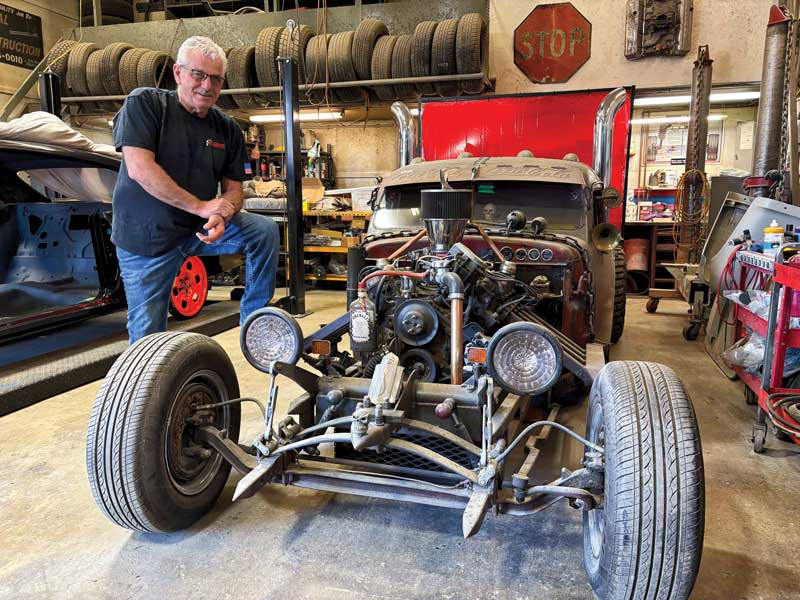
The old pickup truck in Larry Oakes’s car repair shop is a 1941 Studebaker. But look closely and you’ll see it’s much more than that. The body may be a Studebaker, but it’s powered by a 425-cubic-inch Cadillac engine. The headlights come from an old Model A. The sideview mirror says Harley-Davidson on it. The door handles are old toolbox handles, and the sun visor that’s attached to the roof comes from an ancient Coca-Cola machine.
An old Coleman stove gas cannister is attached next to the engine just for the hell of it, and an empty Fireball cinnamon whiskey bottle serves as an overflow for the radiator. On the back, Oakes took a pair of kerosene oil lamps from a horse-drawn carriage dating back more than a century and converted them into taillights.
This vehicle is more than an old pickup truck. It’s one of Oakes’s many “rat rods”—custom cars that he has patched together out of old parts and assorted odds and ends that happen to be lying around. Unlike many traditional hot rods that are polished and shiny, these rat rods are gritty and rebellious—junkyard dogs with mismatched parts and rumbling engines that turn heads when out on the road.
Oakes has worked on thousands of cars at his Automaster Collision Center, a full-service repair shop and towing service that he opened in 1989 in Spruce Head, a town outside of Thomaston that’s best known for lobster.
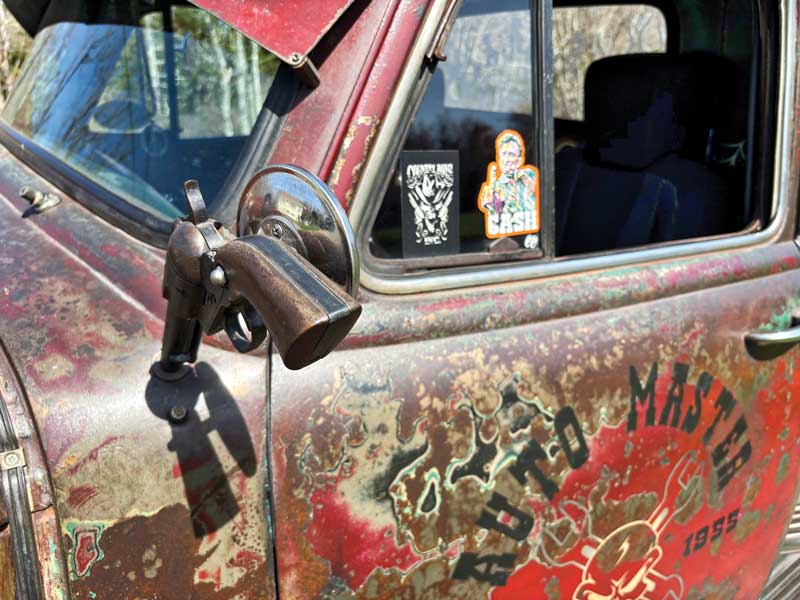
He also refurbishes cars of his own and for other people, restoring classic autos to pristine condition and modifying them with modern upgrades for performance and comfort—the final result known as a “restomod.” Many of those cars are the type you keep in a garage and take out on special occasions.
But it’s the rat rods where Oakes gets to be creative and have fun. “I’m a gear head, I’ve been a gear head since the day I was born,” he said while showing off his eclectic collection of cars. “I love this stuff. The new cars are nice, but for me, this is my world. This is what I grew up with. This is what I know.”
The history of rat rods goes back to the roots of hot-rodding decades and decades ago, when car geeks built stripped-down cars for speed out of whatever parts they could afford and find. It’s been written that the so-called rat rod movement had a resurgence in the 1990s as a kind of blowback against traditional hot-rodding, which had grown expensive and commercialized.
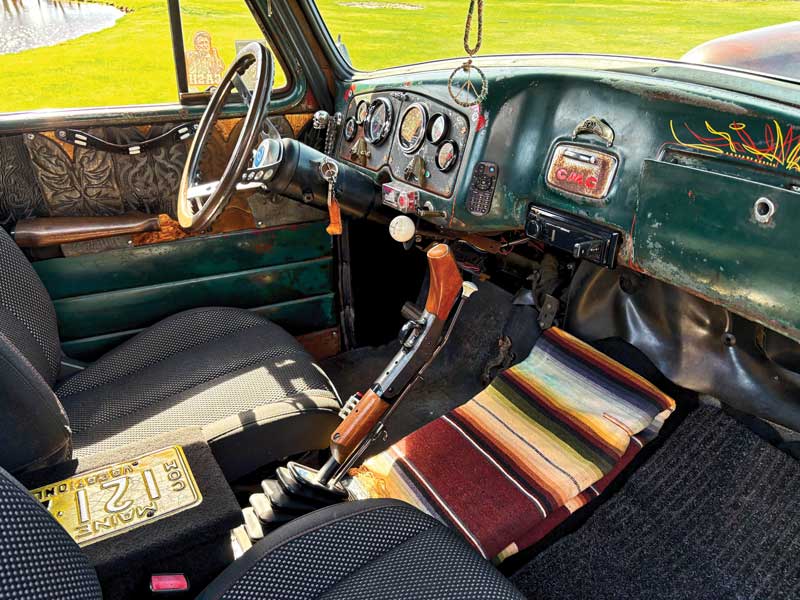
Rat rodders like Oakes refurbish old cars dating back to a different era of decades past, using whatever they have at hand. It’s considered a badge of honor to build and drive cars with outlandish details that are unique to the people building them.
The 70-year-old Oakes has the enthusiasm of a teenager as he shows off his assortment of rat rods, which might remind you of the mutant toys in the animated film “Toy Story.” In the movie, the character Sid takes mismatched and discarded toy parts and puts them together—like a hand being attached to a leg or a one-eyed baby doll head placed on top of a spider-like body made from an erector set.
Take Oakes’s “rat bike,” a motorcycle with an old Farmall tractor fuel tank and front and rear fenders from a 1935 Buick. The brake pedal is an old pair of ice tongs, and the taillight is made out of a speaker from the long-closed Rockland drive-in theater. An old wrench serves as the kickstand, and the shifting rod is
an abandoned rifle barrel. Two disabled .45-caliber revolvers are attached to the rear fenders as a finishing touch.
“You just got to let your mind go sometimes,” Oakes said. “Mismatched mirrors. Mismatched hand grips. Mismatched this and that. But it all fits together.”
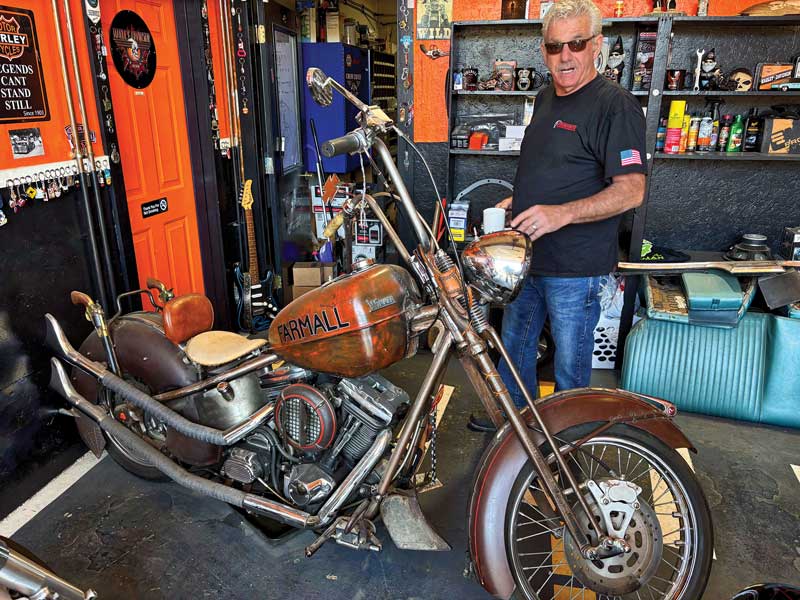
Outside his shop sits his 1955 GMC pickup truck with a license plate reading “Shotgun.” An engine cover from an old David Bradley walk-behind tractor makes do as the truck’s hood. The front bumper comes from a car once owned by the artist Jamie Wyeth, the third generation of the famous Wyeth family of painters.
But it’s the assortment of disabled firearms that adorns the truck that make it truly unique. Oakes said a law enforcement agency over the years has given him all sorts of non-functioning guns that were confiscated primarily in domestic abuse cases.
The result? A .25-caliber revolver is attached to the front bumper. A .35 Magnum holds the driver’s side-view mirror in place, and two derringers are attached to the tailgate. The gear shifter is made from a sawed-off shotgun, and a gun stock serves as an arm rest on the passenger side door. The brake pedal is made from a shotgun barrel.
But the car isn’t just for show. With its twin turbo engine, it’s also built for speed. “It’ll go down the road like a bat out of hell,” Oakes said.
Rounding out his rat rod collection is a 1948 Chevy coupe, the first rat rod he built about 15 years ago after catching what he calls the “rat rod bug.”
Rat rods have become increasingly popular across the country over the years, said Jason Rantala, who owns a car detailing business in Spruce Head and knows Oakes’s cars well. Rantala also owns a few collector’s vehicles of his own—but no rat rods.
Still, Rantala knows cars. Rat rods, he said, harken back to the roots of hot rodding, where people would use whatever was at hand to build their own vehicles. And they’re meant to be driven down the road and shown off, not kept hidden away and protected in a garage or under a tarp.
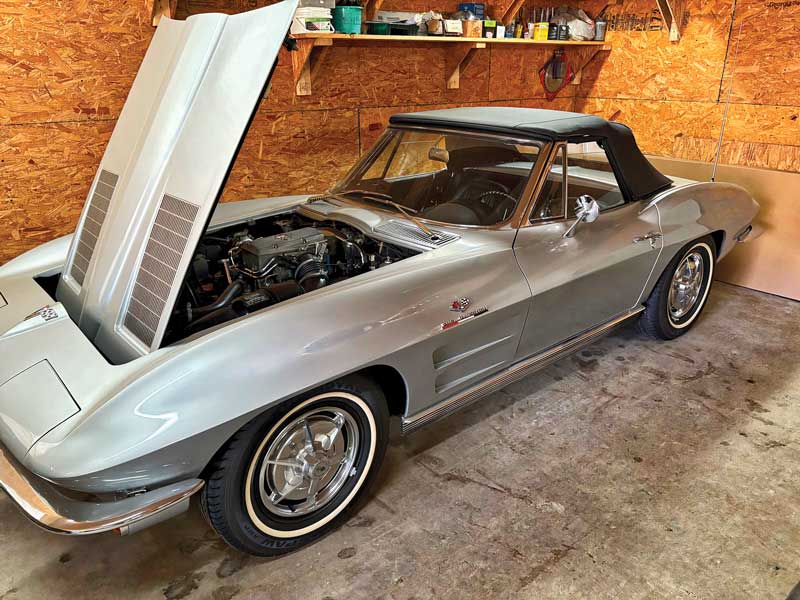
“If you take it out and it gets into an accident you can just go to a junk yard and weld together some parts,” he said. “There are no rules with those.”
Oakes also owns some valuable refurbished vehicles. He’s now restoring a 1963 Chevy Nova SS and a 1965 Ford Fairlane 500. He has a 1965 Pontiac GTO that he’s owned for 38 years, a 1963 Chevy Corvette convertible that he bought at auction a decade ago, and a 1951 Pontiac Chieftain with crushed velour seats and door panels that his late father once owned.
Oakes hopes to pass along his passion for old cars to today’s younger generation as they begin driving and discover the joys of cars. His grandson worked at his garage this summer, and students from a nearby vocational technical school sometimes tour his shop to see his collection.
“I want to keep it alive,” Oakes said. “For me it’s a cool vibe, and I want to pass it down to younger kids.”
✮
Clarke Canfield is a longtime journalist and author who lives in South Portland. As a young man, his ride of choice was a tricked-out used 1967 Ford Econoline Supervan. These days, you’ll spot him in a practical VW Jetta sportswagon with 170,000 miles and a roof rack he uses for kayaks and canoes.






